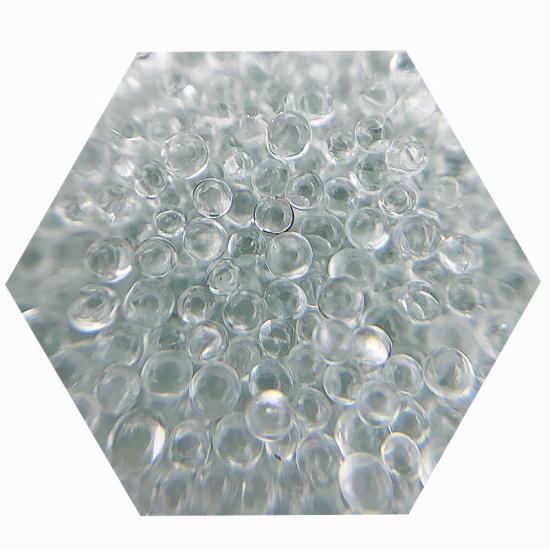From Production to Installation, The Full Process of Road Marking Glass Beads
2025-07-17
Road marking glass beads play a vital role in improving road visibility and safety, especially at night or in poor weather, by reflecting vehicle headlights to make road markings more visible. The production and installation process involves several key stages:

Making Glass Beads
The production begins with raw materials like silica sand, soda, and lime, which are melted at high temperatures to form molten glass. The molten glass is then cooled and shaped into spherical beads. A surface coating is applied to enhance the beads’ performance.
Quality Control
Strict quality control ensures the beads meet standards for:
Reflectivity: Sufficient light reflection for night and poor-weather visibility.
Size and Shape: According to standard or customized size proportion.
Heavy metal: Ensure the heavy metal content is lower than the limitation.
Transport and Storage
Once produced, the reflective glass beads are carefully packed in moisture-proof bags to protect them during transport. It’s important to avoid exposure to heat or damp conditions, as these can affect their reflective abilities. The beads should be stored in a dry, cool place to keep them in optimal condition.
Designing Road Markings and Mixing Glass Beads
Road marking designs are created based on factors like traffic volume and weather. The right proportion of glass beads to paint is determined based on experience and standards.
Applying Road Markings and Glass Beads
Beads are applied to liquid paint using bead-spraying machines, ensuring even coverage. This can be done using spraying or hot melt techniques. The beads must be precisely controlled to achieve the desired reflective effect.
Maintenance and Inspection
After the road markings are installed, they need regular checks and maintenance to keep their reflectivity high. Over time, the beads can lose their reflective quality due to traffic wear, weather, or other factors. Therefore, the road markings should be inspected regularly, and glass beads should be reapplied when needed to maintain safety.
Environmental and Safety Considerations
Sustainable production methods and non-toxic materials are increasingly used to minimize environmental impact, along with energy-efficient techniques and minimal use of chemical coatings.
The production and application of glass bead road surface marking involves several key steps, including careful manufacturing, quality control and professional installation, all of which are designed to improve road safety. As technology advances, so too does the process become more efficient and environmentally sustainable.
The process of producing and applying road marking glass beads involves several stages, each vital for ensuring they provide effective visibility and safety. With careful production methods, strict quality control, and professional application, these glass beads help improve road safety. As technology advances, the production and use of road marking glass beads will continue to be more efficient and environmentally friendly.


